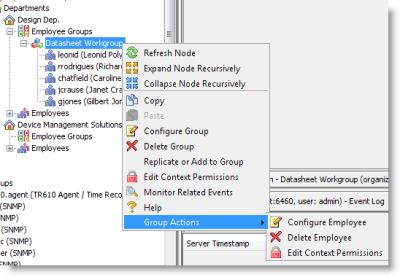Group Operations
Groups are used to consolidate devices or system resources (such as event filters or alerts). They simplify management of large device/resource sets and make batch operations more convenient.
Batch Operations
It is easy to execute an operation over all resources in a group, e.g. reboot ten devices at once. Groups also provide an easy way to apply similar settings to all members or automatically replicate configuration changes between them.
Master Values
With groups, you can have "master" values for group member properties. Changes of master values are automatically applied to all group members.
Dynamic Groups
While it's possible to add members to any group using drag and drop, some groups may also auto-populate their contents.
Such a dynamic group has a so-called validity expression that is used to check whether every system resource is valid for this group. If it is, the resource is automatically added to the group, and it will be auto removed once it no longer matches the validity expression.
Example: dynamic groups in a fleet management product may automatically show vehicles with low fuel level and vehicles with active alerts.
Nested Groups
It's possible to put groups into other groups. Group nesting level is not limited.
Nested groups are often used to reflect complex hierarchies of corporate assets divided by divisions/departments or geographically.
Group Status
Groups may automatically analyze properties of their members and use flexible rules to evaluate aggregate groups status.
For example, a group of devices may get red ("group members have problems") if at least one device in a group has synchronization errors. If no devices have errors, a group will be yellow ("group members are offline") if at least one member is disconnected and green ("all group members are fine") otherwise.

